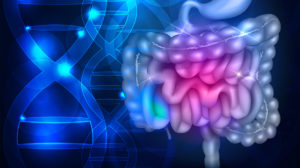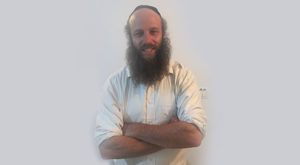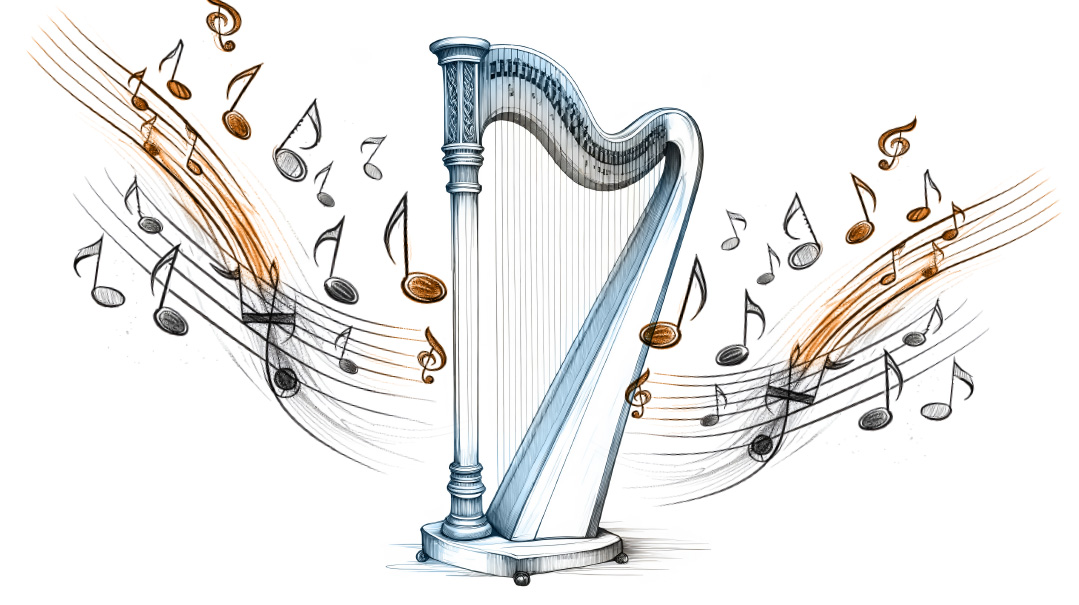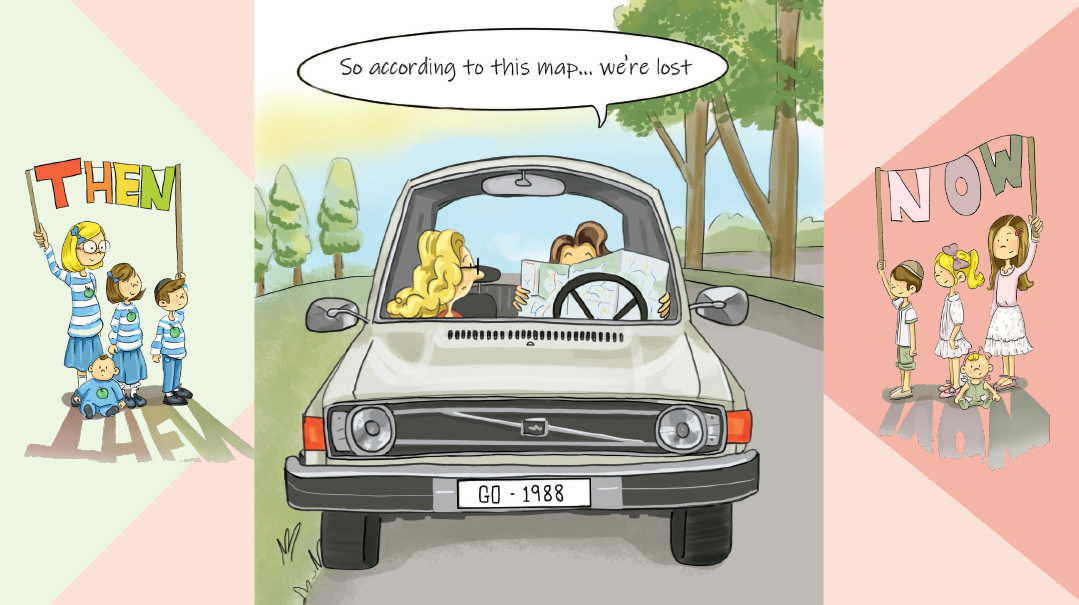The Silent Bone Thief
| September 4, 2019Osteoporosis is a preventable and treatable disease. Here’s how to mitigate your risks

Rarely do we consider our bones when we take inventory of our health. Heart health, mental health, weight, even skin, take priority. Yet it is estimated that two hundred million people have osteoporosis today. In fact, at least one in three women will suffer from an osteoporotic fracture during her lifetime.
“People hear about osteoporosis,” says Dr. Shimon Harary, an endocrinologist and bone specialist in Memphis, “but they greatly underestimate the effects of how severe it can be, and how widespread it actually is.”
Bones are living, growing tissue. They’re constantly breaking down and rebuilding, a normal part of the metabolic process. In fact, over the course of seven years, we get an entirely new skeleton. As we age, however, this process becomes less efficient, and our bones don’t rebuild as fast as they break down. This causes a loss in bone density, which can lead to osteoporosis, a condition where bones become porous and fragile. Osteoporosis actually means “porous bones,” and people who suffer from it are susceptible to fractures.
Bones grow in length until we’ve reached about age 17, and continue to thicken until we reach our late twenties. This is called peak bone mass. Sometime during our thirties, we begin to lose bone mass. For women, loss is minimal until menopause, when it becomes more dramatic, increasing the risk of developing osteoporosis.
Several factors increase an individual’s risk of developing osteoporosis. Genetics play a role —those who have a parent with it are more likely to have it too. Women with a slighter build are more vulnerable. Certain illnesses and conditions will also make an individual more susceptible.
“Conditions such as celiac disease, Crohn’s disease, and rheumatoid arthritis can speed bone loss, as can taking such medications as corticosteroids,” says Wayne Johnson, a spokesperson for the American Academy of Orthopaedic Surgeons (AAOS).
Osteoporosis is dangerous. A minor fall can cause a fracture. Hip fractures are particularly severe. The percentage of people who fracture their hip and die within a year has been estimated as high as 58 percent, with older adults having the greatest risk. But even when mortality is not an issue, the effects can be debilitating.
“When you go from full mobility to being bed bound, or wheelchair bound, it can be life changing,” says Dr. Harary.
Fractures caused by osteoporosis are more common than heart attacks, strokes, and breast cancer combined. And it’s expensive. Hip fractures can cost over $20,000, more if a patient needs care in a facility. One in three hip-fracture patients will refracture within a year. Osteoporosis is a “silent thief”; there are no symptoms, and most women are unaware they have this condition until they suffer a fracture.
“Many of these fractures would have been preventable, if we had screened them and treated them,” says Dr. Harary.
While bone loss is a reality for everyone, osteoporosis is a preventable disease. Proper diet and exercise can mitigate the risks. And even once someone develops the disease, there are many effective drug options available to prevent further bone damage.
A Bone-Healthy Lifestyle
Maintaining healthy bones is important at any age, but the largest impact can be made during youth. Young people should take proactive measures to ensure bones reach peak mass. This can be done with a calcium-rich diet and exercise. The bigger and thicker one’s skeleton is, the less likely one is to suffer from osteoporosis, because the denser one’s bones, the more one can afford to lose later.
Bone health requires a variety of nutrient-rich food, especially calcium, which is better absorbed with the help of vitamin D. Few foods have it — and people tend to avoid sun exposure, a source of vitamin D — and so supplements are often needed. The American Academy of Pediatrics recommends vitamin D supplements during the first year, unless a child is drinking 32 ounces of formula daily. Consult with your child’s doctor regarding amounts.
The Institute of Medicine recommends a daily intake of 600 IU of vitamin D for young adults. After age 70, increase to 800 IU.
It’s important to get sufficient amounts of calcium daily. Dr. Etah Kurland is a consultant in metabolic diseases for the Department of Orthopedics at Lenox Hill Hospital in Manhattan. “If you have an inadequate amount of calcium intake, and there’s a minimum daily requirement,” she says, “there are mechanisms for the body to extract calcium from the bones to meet daily needs. We don’t want people to be in negative calcium balance where daily requirements are more than what’s coming in.”
She recommends between 800 and 1,000 mg per day. If you don’t get enough calcium from food, it may be necessary to supplement with vitamins. Some fear calcium supplements increase the possibility of heart disease, but the risk is minimal.
“There is a slightly increased risk of coronary artery disease if calcium intake is more than 1,400 mg,” says Dr. Kurland. “Someone taking a more modest amount should not be running into any trouble.”
Certain factors can prevent efficient calcium absorption. Excessive dieting, a sedentary lifestyle, and spending time indoors can stand in the way, as well as high sugar foods, high salt intake, and highly caffeinated drinks.
Interestingly, while bran is a healthy food choice, when consumed with milk, it prevents the absorption of calcium.
Exercise is also important. Weight-bearing exercise, such as walking, jogging, and aerobics, puts stress on bones, causing new tissue to form. Resistance exercise, such as weight lifting, also strengthens bones. The AAOS recommends 30 minutes of weight-bearing exercises four or more days per week. If, however, you are at risk of a fracture, weight-bearing exercise should be low impact — walking rather than running, for example.
It’s never too early to start. The AAOS says weight-bearing exercises, such as soccer and basketball, are important for teens to help them reach peak bone mass.
Chava has been exercising with weights since her twenties. “Osteoporosis runs in my family. I want to do all I can to avoid getting it.”
Chava’s mother, Brochie, who has osteoporosis, also exercises regularly. “I practice yoga six times a week, plus swimming and walking. My doctor said three times a week is enough, but I’ll do more.”
From Screening to Scans
There are currently three screening tools available to help assess an individual’s risk — FRAX, SCORE, and OST. They can be done in office in a relatively short amount of time and are quite accurate. FRAX calculates risk based on age, gender, weight, height, previous fracture, family history of fracture, smoking or alcohol consumption, and steroid usage.
SCORE evaluates risk based on race, rheumatoid arthritis, medical history, age, estrogen use, and weight. OST assesses risk based on age and weight. In studies of women aged 50–64, SCORE had a success rate of 74 percent and OST a success rate of 80 percent in identifying women with osteoporosis.
DXA is a bone density test that uses X-ray technology to scan bones and detect osteoporosis before a fracture occurs. The test determines if bone density is normal, low (osteopenia), or osteoporotic. The hip, spine, and sometimes forearm are scanned — the most likely places to fracture. Painless and short, the test takes about 15 minutes to complete. Results are measured either with a T-score, which compares bone density to that of a 30-year-old, or with a Z-score, which compares bone density to people of similar age and build.
Most current guidelines advise women over 65 to undergo a bone density scan; however, this doesn’t take into account women with greater chances of developing osteoporosis. If a woman is aware of factors that make it more likely she will develop osteoporosis, she should speak to her doctor about getting a bone scan sooner than 65.
“Many doctors are not aware that they need to scan people at higher risk, until there’s a fracture,” Dr. Harary says. “I don’t think there’s adequate screening for it. Osteoporosis is severely underdiagnosed, and when it is diagnosed, patients already often have advanced bone loss, or even fractures.”
When is the optimal time for a woman to have her first bone density scan?
“When a woman knows she’s getting close to menopause, and she has any reason to believe that she’s perimenopausal, that’s a good time to get a baseline bone density,” says Dr. Kurland. “The biggest risk to women in terms of changes in bone mass are going to take place in the perimenopause and immediate postmenopausal period.”
She explains that because women are prone to a major decline after menopause, it’s important to know what their bone density was as they were entering that stage. “I don’t want to wake up five years into menopause and say, ‘Hmm, what should I do about my bone density now?’ ” she says.
“I’d say anybody who has low body weight or a very thin build, takes long-term steroids, is a smoker or has excessive alcohol consumption, has rheumatoid arthritis, hypogonadism, overactive thyroid, celiac disease, premature menopause, chronic liver disease, inflammatory bowel disease, or other risks for bone loss should get screened earlier,” advises Dr. Harary.
Brochie went for her first scan ten years ago when she was 51. “My mother has osteoporosis. So did her father and my aunt, so my doctor wanted to test me.”
Leah, who has osteopenia, got lucky and was diagnosed 15 years ago at age 52. “I work in a nursing home, and one day there was a screening. I decided to have one. They scanned my forearm and said there may be an issue. I went to an endocrinologist, who sent me for a scan.”
It’s critically important to follow up after receiving results of a scan, especially if your numbers are low.
“I see many patients who had a bone density scan ten years ago, when they were slightly osteopenic and did not get a follow-up, present ten years later with advanced bone loss, or even a vertebral or hip fracture. Osteopenia was the beginning of this road.”
Medication Misconceptions
Most medications slow bone breakdown. Some new medications actually build new bone. As with all medications, there are side effects, mostly minor, such as heartburn and stomach upset. The more frightening side effects, a sudden shattering of the femur and a rotting jawbone, are exceedingly rare — 10 to 40 people in 100,000 sustain the thigh fracture, fewer than one in 100,000 develop the jawbone problem. However, many women are frightened by the potential for the side effects, and refuse medication.
Malka has osteoporosis. Three years ago, still in the osteopenic stage, she fell and broke three bones and all her ribs. She was aware of her low bone mass, but would not consider medication. “These medications are new and don’t have a proven track record, and the side effects are frightening,” she says. “My aunt needed her entire jaw rewired. I’ll take my chances.”
This is a misconception, since the medications have been around for quite a while, some since 1995, says Dr. Harary. “I think 25 years is plenty of time to tease out rare side effects in meds taken by millions of people. The track record is clear and effective; the side-effect profile in the real world is minimal.”
“People are putting themselves at increased risk of fractures because of their unfounded fears,” says Dr. Kurland, “and because of that, people who might benefit very much from taking medication don’t take it. This is more common in the last five to ten years, as there has been more noise about the possible complications of taking osteoporosis medication.”
It’s important to note that the rare complications of osteoporosis treatment present only after long-term use of these medications, and this kind of protracted treatment is uncommon today. Today, osteoporosis medication isn’t taken for years on end. In fact, clinical guidelines call for bisphosphonate “holidays” three to five years after a course of treatment.
“People need to understand that the complications associated with taking medication accrue with the increased use of medication,” Dr. Kurland says. “It’s highly unlikely and rare for people to run into complications from osteoporosis medication with a limited time course of treatment. The complications they’re reading about, or hearing about, are women who for the most part took many continuous years of medication, which is not something that should happen today.”
Although Malka remains skeptical about medication, she admits she may need to be more proactive. “I’m exploring options,” she says.
Brochie prefers to avoid medication. She says she’d rather combat her osteoporosis with exercise and diet.
Dr. Kurland feels this isn’t sufficient. “People need to know that calcium, vitamin D, and exercise are important adjuncts and hopefully forestall further decline in bone density. They’re not going to increase bone density.
“I often tell patients that calcium and vitamin D and even exercise are sort of equivalent to brushing and flossing teeth. You brush and floss to minimize the number of cavities that you are going to get. But if you already do have a cavity, you are not going to be thinking that brushing and flossing your teeth is going to treat your cavity. If you don’t fill your cavity, your cavity is just going to get bigger.
“It’s similar conceptually. You could exercise, take calcium and vitamin D, and may be able to remain stable with less of a bone density decline, but that’s not considered definitive treatment. It’s unlikely to increase your bone density.”
“What people are not understanding is that the risk of a fracture, and all the potentially poor outcomes that come along with it, far outweigh the much lower risk of side effects,” says Dr. Harary. “The benefit of the medication is very high. Online information scares people into believing the medication will hurt them when the reality is that doing nothing will hurt much more.”
Leah made the decision to begin a course of medication 15 years ago. Despite the challenges of side effects, including a burned esophagus and fainting after one infusion, she has persisted, and recently her doctor prescribed a new drug that seems to be working. “The truth is when you look at any medication and read the side effects, you wouldn’t take any of them, not even aspirin. They all have dire warnings. You have to look at percentages and you have to ask, what are the pros and cons.”
Aiming to avoid medication, many women say, “I’ll be careful,” but it doesn’t work that way. Even a minor fall can have major consequences.
There is much that can be done to prevent bone loss, and the possible subsequent damage. It’s up to us to be more proactive about bone health so we prevent osteoporosis and enjoy strong bones throughout out lives.
Risky Business
A number of conditions put one at greater risk for osteoporosis. These include:
- Alcoholism
- Anorexia
- Asthma
- Cancer
- Cushing’s disease
- Diabetes
- Hyperthyroidism
- Hyperparathyroidism
- IBS
- Lactose intolerance
- Lupus
- Liver or kidney disease
- Multiple sclerosis
- Rheumatoid arthritis
Calcium-Rich Foods
Everyone knows that milk is full of calcium, but other foods are calcium rich as well. In packaged foods, calcium content can vary. Check labels.
Produce
- collard greens
- kale
- soy beans
- bok choy
- broccoli
- oranges
- figs
Fish
- sardines with bones
- salmon with bones
Dairy
- yogurt
- milk
- cheese
- hard cheese
- cottage cheese
Other
- fortified alternative milks
- fortified fruit juice
- fortified cereal
- beans
And here’s how much you need
(Based on recommendations by the Food and Nutrition Board):
Birth–6 months 200 mg calcium
7–12 months 260 mg calcium
1–3 years 700 mg calcium
4–8 years 1,000 mg calcium
10–20 years 1,300 mg calcium
20–50 years 1,000 mg calcium
50 years and older 1,200 mg calcium
Bone-Healthy Food
Magnesium maintains strong bones; potassium conserves calcium. Vitamin K plays a role by keeping calcium in bones, while vitamin C helps the formation of collagen and stimulates cells that build bone.
- Vitamin D Salmon, tuna, sardines, herring, eggs, liver
- Magnesium Spinach, okras, tomatoes, artichokes, potatoes, sweet potatoes, collard greens
- Potassium Tomatoes, raisins, oranges, bananas, plantains, potatoes, sweet potatoes
- Vitamin K Spinach, kale, collard greens, brussels sprouts
- Vitamin C Red peppers, green peppers, brussels sprouts, oranges, grapefruits, pineapples, papaya, broccoli, strawberries
Weighty Benefits
There are a variety of enjoyable weight-bearing exercises that can help keep your bones strong:
- Tai chi builds coordination and strong bones, slows bone loss in post-menopausal women
- Yoga regular practice builds bone in hips, spine, and wrist, also improves balance and coordination
- Brisk walking four hours a week lowers risk of hip fractures
- Dancing builds bones and improves balance
- Hiking increases bone density, especially in hips, even more if hiking uphill or downhill
- Racquet sports improves bone health in wrist, arm, and shoulder
- Strength training stimulates bone growth when done at least twice a week
- Golf carrying the golf bag and walking works hips and spine
(Originally featured in Family First, Issue 658)
Oops! We could not locate your form.











